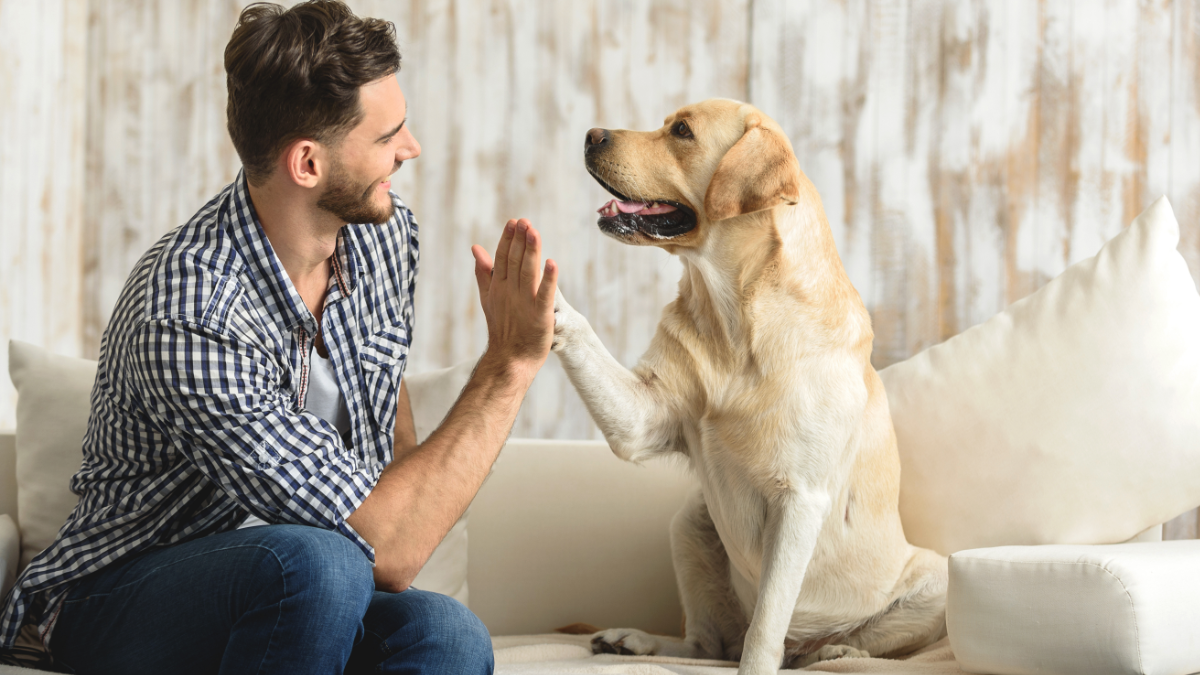Dog owners often face the challenge of keeping their pets safe within a designated area while allowing them the freedom to roam. One solution that has gained popularity is the use of shock fences for dogs, also known as invisible or electric fences. However, it’s crucial to understand how to use these systems humanely and responsibly to ensure the well-being of your furry friend.
In this guide, we will explore the concept of shock fences, their proper usage, benefits, and potential concerns.
Understanding Shock Fences for Dogs
A shock fence for dogs is a containment system designed to keep dogs within a specific area without the need for physical barriers like traditional fences. It consists of three main components:
Boundary Wire
A wire is buried underground or attached to existing physical boundaries to create an invisible perimeter. This wire emits a radio signal that establishes the boundaries.
Receiver Collar
The dog wears a receiver collar that contains sensors to detect the signal emitted by the boundary wire. When the dog approaches the designated perimeter, the collar delivers a mild static correction or shock as a deterrent.
Transmitter
The transmitter, usually located in your home, sends the signal through the boundary wire and allows you to control the system’s settings.
The Humane Use of Shock Fences
While shock fences can be effective in keeping dogs safe and contained, it is crucial to use them humanely and responsibly. Here are some guidelines for the humane use of shock fences in dog training:
Proper Training
Before activating the shock fence system, invest time in proper training for your dog:
Flag Placement
Many systems come with training flags. Place these flags along the perimeter so your dog can visually recognize the boundaries.
Collar Introduction
Allow your dog to become accustomed to the receiver collar by letting them wear it without activating the shock.
Leash Training
Walk your dog on a leash near the boundary while holding the receiver collar. This helps your dog associate the warning tone with the boundary.
Positive Reinforcement
Use treats and positive reinforcement to reward your dog when they respond correctly to the warning tone.
Supervision
Always supervise your dog during the initial training phase to ensure they understand the boundaries.
Proper Collar Fit
Ensure the receiver collar fits your dog properly:
Snug but Not Tight
The collar should be snug but not so tight that it causes discomfort. There should be enough room for two fingers to fit between the collar and your dog’s neck.
Adjustable Correction Levels
Most shock fence systems offer adjustable correction levels. Use the lowest effective level of static correction for your dog’s size and temperament. Higher settings should only be considered if lower ones are ineffective.
Consistency and Positive Reinforcement
Maintain consistency in your training and use positive reinforcement techniques to reward your dog for staying within the designated boundaries. This helps create a positive association with the safe area.
Regular Supervision
Even after your dog becomes familiar with the system, continue to supervise them in the yard. Ensure that they are not experiencing excessive stress or discomfort from the static correction.
Benefits of Using Shock Fences for Dogs
When used humanely and responsibly, shock fences can offer several benefits for both pet owners and their dogs:
Safety
Shock fences provide a safe way to keep dogs within a specific area, reducing the risk of them wandering into traffic or getting lost.
Unobstructed Views
Unlike physical fences, shock fences do not obstruct your view of the surroundings, maintaining the aesthetics of your yard.
Customizable Boundaries
You have the flexibility to define the boundaries according to your dog’s needs and the layout of your property.
Cost-Effective
Shock fences are often more cost-effective than traditional fencing options, making them an economical choice for pet owners.
Easy Installation
Once installed, shock fence systems require minimal maintenance and are relatively easy to set up.
Potential Concerns and Considerations
While shock fences have their advantages, there are also some potential concerns and considerations:
Sensitivity Variation
Dogs have varying levels of sensitivity, and what may be a mild correction for one dog could be distressing for another. It’s essential to consider your dog’s temperament and adjust the correction level accordingly.
Risk of Fear or Stress
Improper use or excessively high correction levels can lead to fear or stress in dogs. This can have negative effects on their behavior and well-being.
Limited Protection from External Threats
Shock fences are designed to keep your dog within a specified area, but they do not provide protection from external threats like other animals or intruders.
Maintenance Requirements
Regularly check the system, including the boundary wire and the receiver collar, for any issues or damage. Ensure that the collar’s battery is charged.
Conclusion
Shock fences for dogs can be an effective tool for keeping your pet safe and contained within a designated area. However, it is crucial to use them responsibly and humanely, following proper training and collar adjustment guidelines. Remember that shock fences should be used in conjunction with responsible pet ownership, including exercise, socialization, and positive reinforcement training.
Before deciding to use a shock fence for your dog, consult with a professional dog trainer or veterinarian to assess whether it is the right choice for your specific pet and situation. By using shock fences responsibly and prioritizing your dog’s well-being, you can strike a balance between safety and freedom for your furry companion.
